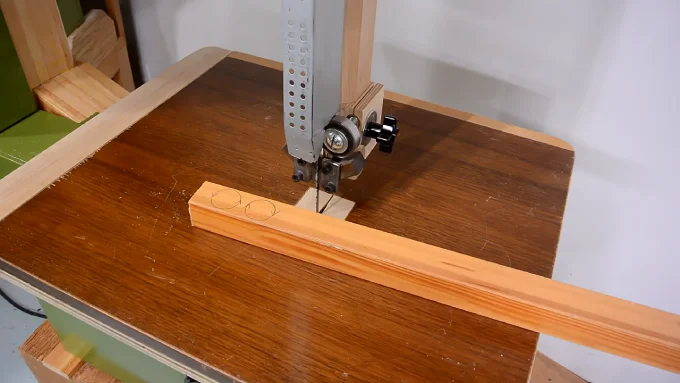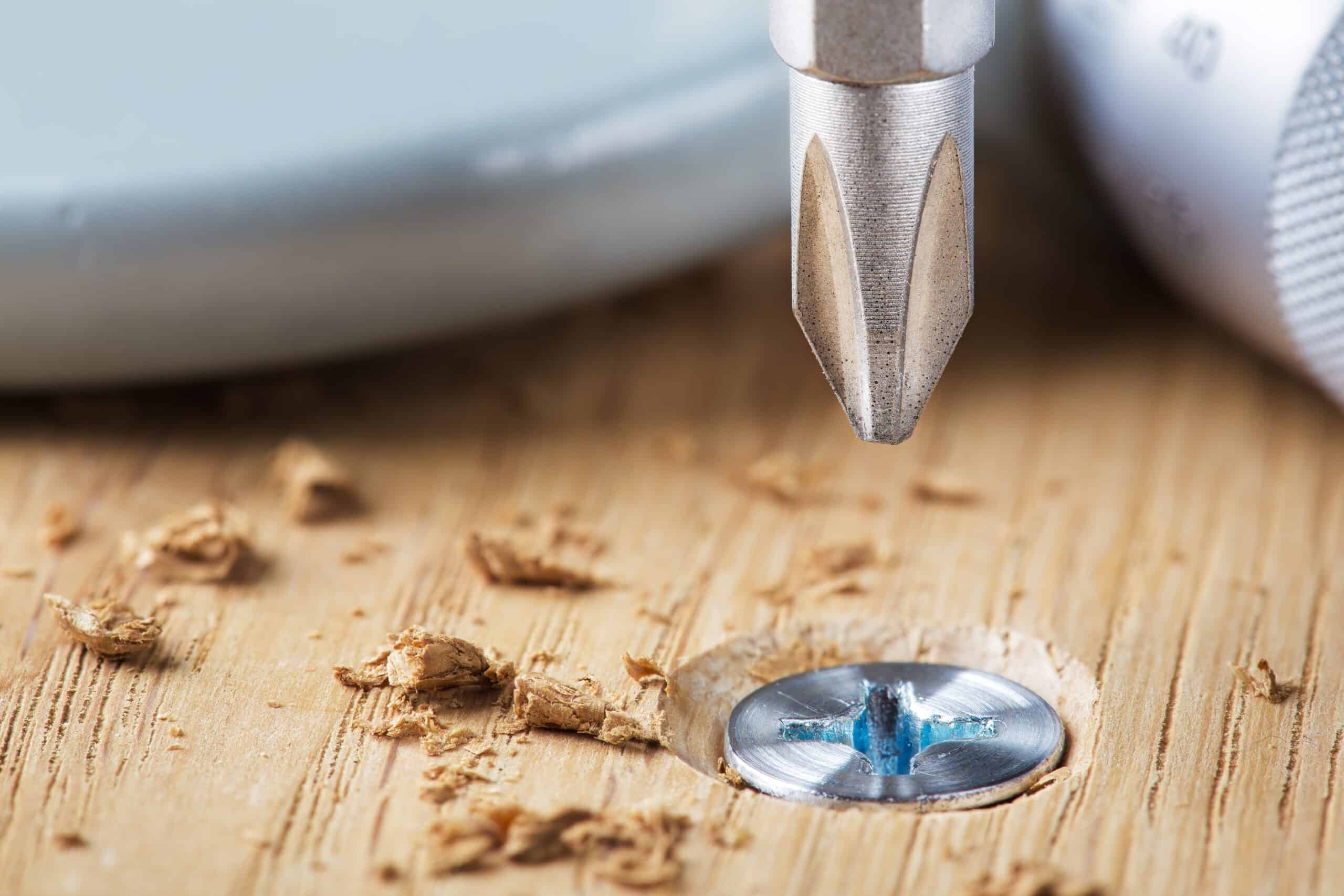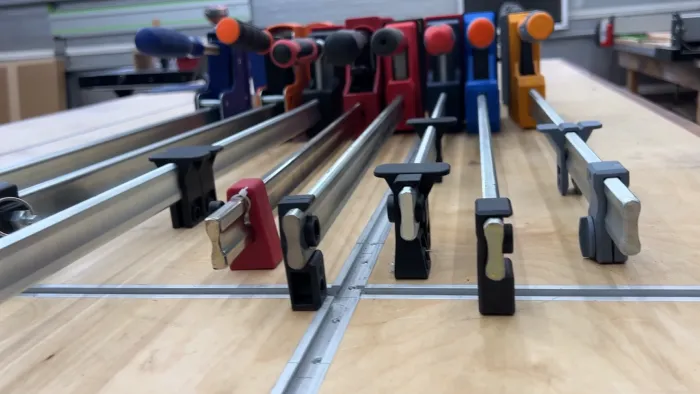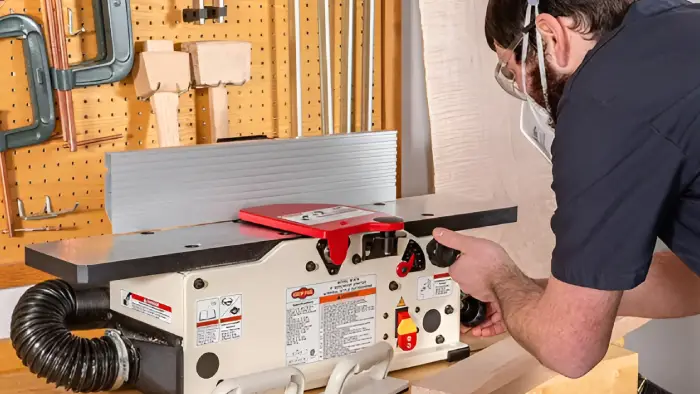WoodenuKnow.com is a participant in the Amazon Services LLC Associates Program, an affiliate advertising program designed to provide a means for sites to earn advertising fees by advertising and linking to Amazon.com and may earn from qualifying purchases.
Have you ever experienced the frustration of your bandsaw blade twisting while trying to make a precise cut? It could be due to many reasons, one of which is an improperly tensioned blade. This can cause the bandsaw to twist while cutting, making it difficult for professionals to obtain accurate results.
Various other issues could be the culprit behind your machine’s performance, from out-of-alignment wheels to dull blades. Everything from installation errors and adjustment mistakes to sub par materials can cause problems that impact the efficiency of your equipment.
To ensure that nothing similar arises again, delving deep and gaining an extensive understanding of potential pitfalls is key.
Discover the secret of why blades twist and how to keep them from doing it in the future – all through reading.
Reasons Why Does Bandsaw Blade Twist?
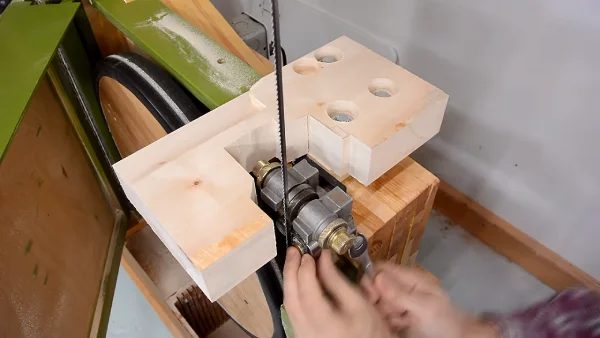
So what exactly causes a blade to twist? Many factors can contribute, but the key players are airfoil design and aerodynamic loading. A combination of these elements has been found to be directly linked with twisted blades.
A. Incorrect Installation or Adjustment
If the guide alignment on your bandsaw is off in any way, it can twist your blade while in use due to uneven weight distribution across the entire piece. Uneven guides, tensioners, and bearings can also put extra stress on the blade, causing it to twist due to friction against them.
Likewise, if the drive wheel isn’t properly aligned with the blade, then this can cause excessive stress on one side of the blade and lead to warping or twisting.
B. Wrong Blade Tension
Your bandsaw blade must have just enough tension for smooth operation without being too tight or too loose. If it’s over-tensioned, it can cause excessive friction, which leads to warping and eventual blade breakage.
On the other hand, an under-tensioned blade won’t cut evenly, which can also result in warping or twisting the blade during use. In general, when gently pulling a blade by hand, the back edge of the blade and its guides should have a play of around 1/4″ inch for small blades and 1/32″ for larger blades.
C. Dull Blades or Poor Quality Blades
Even if installed correctly and set at the right tension, dull or low-quality blades can become warped quickly during use since more force is required to cut. This force isn’t evenly distributed across the length of the blade, which results in uneven stress points that can lead to twisting while in use.
If possible, invest in high-quality tempered steel blades specifically designed for cutting curves and tougher materials like aluminum or plywood. They will last much longer than cheaper alternatives.
D. Wrong-cutting Probability
When cutting complicated shapes like curves or circles on a bandsaw, it’s essential that you select a blade width appropriate for what you are cutting. If the blade is too narrow, it won’t be able to withstand the strain of cutting. This can cause warping and twisting while in use.
Note: Read the manual that came with your bandsaw to get the correct blade size for specific cuts.
You should also apply enough feed force to keep the teeth engaged with the material without overwhelming them, so they start skipping out of their track prematurely. Otherwise, improper alignment between guides and inappropriate feed rate will cause undue stress on your blade, leading to warping over time.
E. Out-Of-Alignment Wheels or Bearings On Your Bandsaw:
Almost all saws, particularly those intended for heavy industrial use, will eventually experience excessive wear, which results in a greater tendency to twist. For example, when the wheels or pulleys on a bandsaw become out of alignment, it can cause more vibration and make it more likely to twist.
If left unchecked for long periods of time, this could potentially cause problems with the future functioning of your saw. Regularly inspecting these components is beneficial in the long term, as it increases the lifespan of your saw.
Safety Tips For Keeping Your Blade From Twisting With a Bandsaw
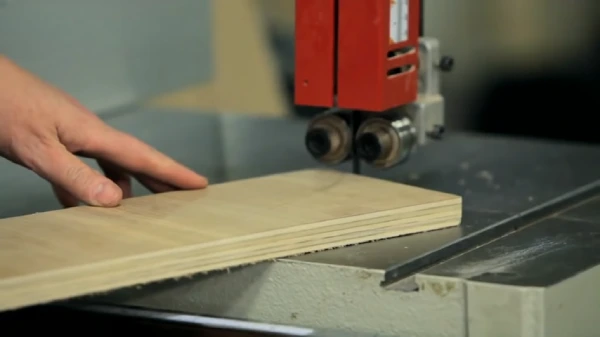
So now you know some of the common causes for a bandsaw blade to twist and warp. To help you out and prevent any safety issues, here are some tips for keeping your bandsaw blade from twisting.
Keep Your Saw Properly Aligned and Tensioned: As mentioned above, a misaligned or poorly tensioned blade can easily twist or break due to uneven stress and strain on the material, so always align and tension your saw before each use.
Use a Steady Speed While Cutting: When cutting through materials with a band saw, it’s important to maintain a consistent speed throughout the cut. Avoid placing extra pressure on certain blade parts that could cause them to twist or break.
Use Only Blades Designed For the Material Being Cut: Different types of materials require different types of blades for them to be cut cleanly and safely. Make sure you’re using the right type of blade for the job.
Don’t Force During Cuts: If your bandsaw has trouble cutting through thicker pieces of material, don’t try to force it by pushing harder. Instead, adjust your machine settings accordingly and take your time with each cut until you get through without any issues.
Clean off Debris Regularly: Cutting through materials can create small particles that accumulate along the sides and teeth of your bandsaw blade. These should be removed regularly (at least once every couple of uses) to reduce wear and tear and ensure everything is running smoothly.
Replace Faulty Blades Immediately: If one of your bandsaw blades does happen to twist or snap at any point during use, replace it immediately. This will ensure that no further damage is done while using this particular tool going forward into future projects.
To Avoid Twisting On the Bandsaw, What Should You Do?
Apart from the above tips, you should also avoid certain things when using a bandsaw. Unchecked missteps will cause your blade to twist disastrously and break any progress you’ve made. To get it right, take care to avoid certain pitfalls.
These are some highlights:
- Before operating the band saw, read through the manual thoroughly to understand exactly how it works and any safety precautions to take.
- Clamp or use an adjustable hold-down device to keep your workpiece steady while cutting. A steady work surface reduces twists and kickbacks.
- Never attempt to remove material from inside a curved cut. For safety reasons, this type of operation should only be done by someone who’s experienced with band saws.
- When pushing materials through your bandsaw, you must hold both ends firmly with both hands to control the force and direction.
- Avoid making too deep cuts, as this will cause a lot of strain on the blade and can result in it becoming bent.
How Does the Tension On the Blade Influence Whether Or Not It Will Twist?
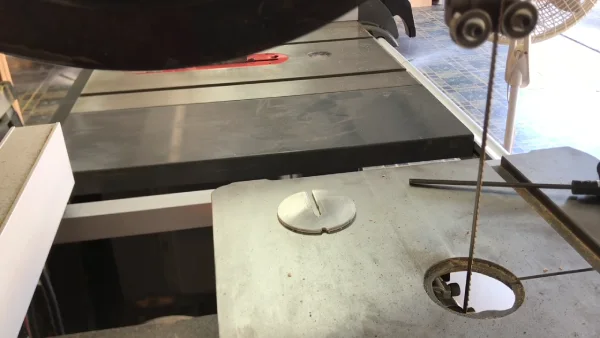
Tension on a blade is like the backbone of an operation. It provides stability and rigidity to get through even the toughest material. The strength required for each job typically varies depending on feed speed, size of the workpiece, and thickness of what’s being cut.
Keeping a saw blade properly tensioned is essential for the longevity of your tool – if not done correctly, it can twist and break under pressure. If a saw blade is too loose, it can start to twist and bind against the material being cut.
For general-purpose carbon steel toothed blades (used primarily for cutting), the ideal tension range typically varies between 15,000 to 25,000 PSI. The recommended tension range for slitting blades, which are used for thinning materials or making precision cuts, is usually between 12,000 and 20,000 PSI.
Note: Bandsaw blades shouldn’t exceed 35,000 psi, even if some machines can handle it.
When Should You Change a Bandsaw Blade to Keep It From Bending?
To keep a bandsaw blade from bending, it should be changed regularly according to its usage and condition. You should look for signs that indicate when changes should be made. Some signs of aging include dulled teeth, more noise from vibration when cutting, or discoloration from heat buildup.
Every type of bandsaw blade has its own set life expectancy, depending on how often you use them and what types of materials you’re cutting. However, most average around six months of continual use before needing to be changed.
Does the Blade Characteristics Affect How Easily It Will Twist?
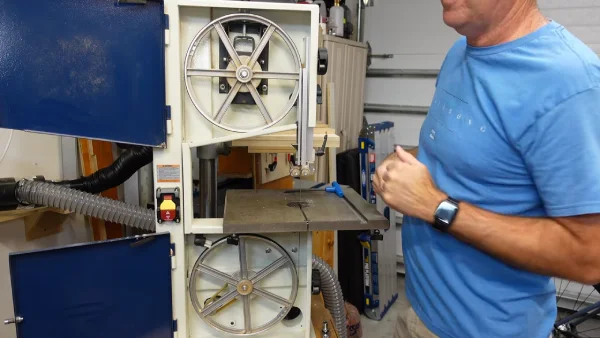
When working with a bandsaw, selecting the right blade can be critical. It affects how easily your project is completed and whether or not you’ll end up damaging the material. The wrong blade choice can make all the difference between smooth cutting and a twisted disaster.
Here’s how blade characteristics affect twisting:
1. Type of the Blade: The type of blade used can impact how easily it twists. Blades made from flexible materials, such as those made from a combination of metals and plastics, are far less likely to twist than blades made from rigid materials like steel or titanium.
Similarly, blades with a tapered profile are more likely to twist than those with a flat profile. Furthermore, some blade types are specifically designed to resist twisting, making them ideal for applications that require stability.
2. Size of the Blade: This plays a huge role when determining the ease of twist. Smaller blades have a larger surface area relative to their mass. They are more susceptible to external forces that cause twisting and other deformations.
Conversely, larger blades have greater internal strength due to their increased mass and tend to be more resistant to deformation.
3. The Blade’s thickness: Blade thickness is a big factor in determining its resistance to twisting and other deformations. Blades that are too thin will be vulnerable to bending or buckling under pressure. While too thick, blades may be too difficult to work with or may not fit into tight spaces where precision is necessary.
For optimum results, the blade thickness should be determined based on the application and any specific requirements imposed by the design or use case scenario.
Avoid Table Top Twists: Get Your Saw Aligned
As you can see from the information above, several factors can contribute to a bandsaw blade twisting. From the tension of the blade and type used right down to whether or not it is properly aligned with the saw table.
Plus, the blades don’t wear out over time when you change them often, so you get smooth cuts every time. All must be taken into account for successful cuts. Otherwise, you may find yourself cutting more crooked lines than straight ones.
In the end, maintenance pays off, so you don’t have any unexpected or unwanted twists with your band saw.

